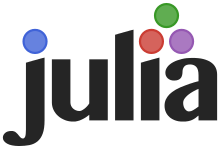Julia Programming Language – A Real Python & R Alternative
Big data has grown to become one of the most lucrative fields. In fact, data scientists are some of the most sought people. They are usually hired to analyze, control and parse large chunks of data. Implementing these actions using traditional techniques is not a walk in the park. This is why most data scientists prefer using programming languages such as R and Python. However, there is one more programming language that can do the job. That is Julia programming language.
What Is Julia Language?
Julia is a programming language that came into the limelight in 2012. It is a general-purpose programming language that was designed for solving scientific computations. Julia was meant to be an alternative to Python, R and other programming languages that were mainly used for manipulating data. This is because it has numerous features that can minimize the complexities of numerical computations.

Julia optimizes on the best features of Python and R while at the same time overlooks their weaknesses. This explains why it is viewed as an alternative to these programming languages. For instance, it utilizes the readability and simplicity of Python then performs faster.
Julia is the most preferred programming language for data scientists and mathematicians. This is because its core features are similar to the ones that are used on most data software. Also, the language is ideal for these two subjects because its syntax is similar to the standard mathematical formulas.
Key Features Of Julia Language
- Uses JIT Compilation
- Parallelism
- Dynamic Typing
- Simple Syntax
- Allows Metaprogramming
- Accessible to Libraries
- -1-Array Indexing
Julia Vs Python And R Programming Languages
1. Speed
Julia is faster than both Python and R. This is a very critical aspect that is given special attention in the big data programming. The high speed of Julia is because of JIT compilers. You will need to install external libraries on Python to achieve similar speed.
2. Syntax
Julia has a math-friendly syntax. The syntax of this programming language is similar to the mathematical formulas hence can be used to perform mathematical and scientific computations. This syntax makes it easier to learn than Python.
3. Parallelism
Although both Python and R use parallelism, Julia uses a top-level parallelism. Julia allows the processor to perform to the optimum level than what Python and R can achieve.
4. Versatility
Julia programming language is more versatile than Python and R. It allows a programmer to move from different codes and functions with ease.
The only area that Python and R are superior to Julia is in terms of community. Given that Julia is a new programming language, it has a small community as compared to others which have been around for years.
In overall Julia programming language is a better alternative that you can use to handle Big data projects. Despite having a small community, it is one of those programming languages that you can easily learn.
